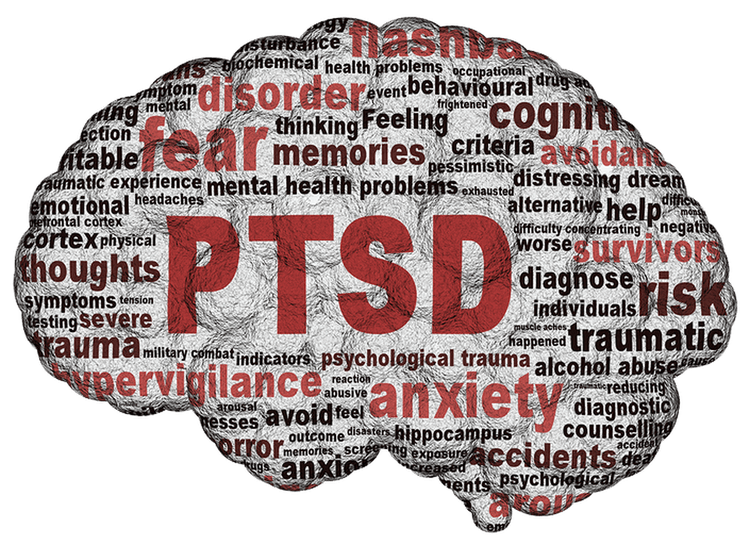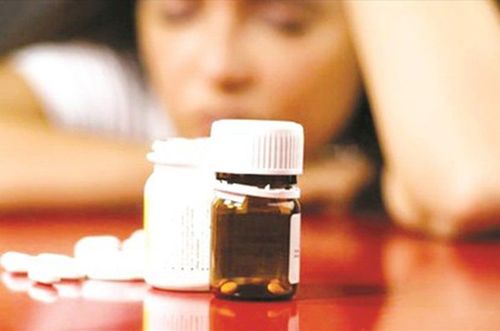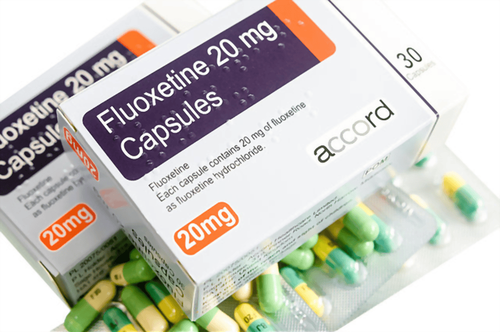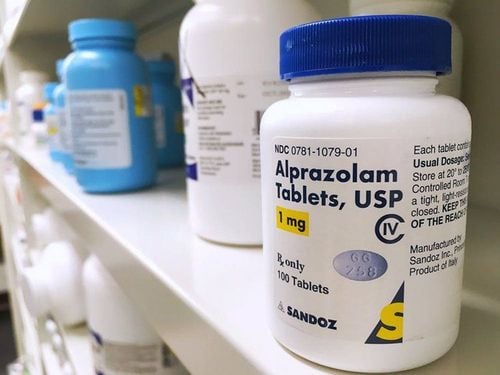This is an automatically translated article.
Post-traumatic stress disorder (PTSD) is an anxiety disorder that can develop after a traumatic event that the patient witnessed or was directly the person who experienced the traumatic event. PTSD has a variety of psychological as well as physical symptoms that interfere with normal daily functioning and quality of life.
1. What is Post-Traumatic Stress Disorder?
Post-traumatic stress disorder (PTSD), formerly known as “shell shock” or “Battle fatigue syndrome”. This name is because PTSD is common in many post-war veterans. This is a serious condition that can develop after a person has experienced or witnessed a serious or traumatic event in which serious physical harm occurred or was life-threatening. network.
PTSD is a long-term consequence of traumatic events that cause fear, helplessness, or horror, such as sexual or physical assault, the unexpected death of a loved one, accident, war, or disaster nature. Families of victims can also develop PTSD, as can emergency workers and lifeguards.
Most people who experience a traumatic event will have possible reactions such as shock, anger, stress, fear and even guilt. These reactions are common, and for most people, they go away with time. However, for a person with PTSD, these feelings continue and even increase with a heavy impact on quality of life. People with post-traumatic stress disorder are diagnosed when symptoms persist for a month and are unable to perform normal activities as they did before the event.
2. What are the symptoms of PTSD?

Những người bị PTSD có thể bị hồi tưởng, ảo giác
Symptoms of post-traumatic stress disorder usually begin within three months of the event. In some cases, however, symptoms begin to appear years after the event. Severity and duration vary from patient to patient. Some people recover within six months, while others are affected over the long term.
Symptoms of PTSD are generally grouped into four main categories, including:
Flashbacks: People with PTSD repeatedly have flashbacks of the event through thoughts and memories of the traumatic event. These may include flashbacks, hallucinations, and nightmares. They may also experience extreme distress when certain objects or circumstances are reminiscent of the trauma, such as the anniversary of the event. Avoidance: Patients may avoid people, places, thoughts, or situations that may remind them of the trauma. This can lead to feelings of separation and isolation from family and friends, as well as a loss of interest in activities the person used to enjoy. Hypersensitivity: The patient easily develops excessive emotions; easy to have problems with people around, easy to show affection; difficulty falling asleep or staying asleep; irritability; outbursts of anger; difficulty concentrating; and easily startled. The person may also experience physical symptoms, such as increased blood pressure and heart rate, rapid breathing, muscle tension, nausea, and diarrhea. Negative perceptions and moods: Involves blaming, alienating thoughts and feelings, and memories of the traumatic event. Young children with PTSD may have delays in developing certain skills such as self-care, personal hygiene, motor skills, and language.
3. Subjects with PTSD
Each individual responds to traumatic events differently. The ability to respond to fear, stress, and to face intimidation caused by a traumatic event or situation varies. For that reason, not everyone who experiences or witnesses trauma will develop PTSD. Furthermore, the help and support received from friends, family members, and post-trauma professionals can mitigate the development of PTSD or the severity of symptoms.
PTSD first came to the attention of the medical community because of its high prevalence among veterans; The names “bullet shell shock” and “post-war fatigue syndrome” are also derived for this reason. However, PTSD can occur in anyone who has experienced a traumatic event that threatens death or violence. People who were abused as children or have been repeatedly exposed to life-threatening situations have a higher risk of PTSD. Victims of physical and sexual abuse-related trauma are at the highest risk of developing PTSD.
4. Frequency of PTSD

PTSD có thể xảy ra ở bất kỳ ai đã trải qua một sự kiện đau thương đe dọa đến cái chết hoặc bạo lực
Approximately 3.6% of American adults – approximately 5.2 million – have PTSD each year, and an estimated 7.8 million Americans suffer from PTSD at some point in their lives. PTSD can develop at any age, including in children. Women are more likely to develop PTSD than men. This may be due to the fact that women are more likely to become victims of domestic violence, abuse and rape.
5. How is PTSD diagnosed?
PTSD is diagnosed when symptoms persist for at least one month since a traumatic event occurred. If PTSD symptoms are present, the doctor will begin the evaluation by performing a complete medical history and physical examination. Although there are no specific tests to specifically diagnose PTSD, your doctor can use tests to rule out physical problems.
If no physical illness is found, the patient may be referred to a psychiatrist, psychologist or other mental health professional who is specially trained to diagnose and treat mental illness. God. Psychiatrists and psychologists use specially designed interview and assessment tools to evaluate a patient for the presence of PTSD or other psychiatric conditions. Physicians base the diagnosis of PTSD on reported symptoms, including any problems affecting quality of life and normal functioning caused by symptoms. The doctor will then determine the symptoms and severity of PTSD's stress disorder. PTSD is diagnosed if the person has PTSD symptoms that last for more than a month.
6. How is PTSD treated?

Thuốc chống trầm cảm để điều trị PTSD
The goals of PTSD treatment are to reduce emotional and physical symptoms, improve daily functioning, and help the person cope better with the event that caused the disorder. Treatment for PTSD may include psychotherapy, medication, or both.
6.1. Medications Doctors use several types of antidepressants to treat PTSD - and to manage feelings of anxiety and related symptoms of PTSD - including selective serotonin receptor inhibitors (SSRIs) such as citalopram (Celexa), fluvoxamine (Luvox), fluoxetine (Prooxox) Paxil) and sertraline (Zoloft); and tricyclic antidepressants such as amitriptyline (Elavil) and isocarboxazid (Doxepin). Mood stabilizers such as divalproex (Depakote) and lamotrigine (Lamictal) and atypical antipsychotics such as aripiprazole (Abilify) and quetiapine (Seroquel) are also sometimes indicated.
Certain blood pressure medications are also sometimes used to control specific symptoms. For example, Prazosin may be used for nightmares, clonidine (Catapres) for better sleep, or propranolol (Inderal) may be used to help minimize the formation of traumatic memories. Experts do not recommend the use of sedatives such as lorazepam (Ativan) or clonazepam (Klonopin) to treat PTSD. Because studies have not shown these groups of drugs to have a therapeutic effect and there is a risk of drug dependence or addiction.
6.2. Psychotherapy Psychotherapy for PTSD involves helping people learn skills to cope with symptoms and practice ways to cope with psychological symptoms. Psychotherapy also aims to educate the patient and family about psychological disorders, and help the person overcome the fear associated with the traumatic event. A number of psychotherapy methods are used to treat people with PTSD, including:
Cognitive behavioral therapy, which involves learning to recognize and change thinking patterns Avoid thinking about negative emotions and behaviors. Prolonged exposure therapy, a type of behavioral therapy that involves the patient reliving traumatic experiences, or exposing the person to worrisome objects or situations. This is done in a well controlled and secure environment. Prolonged exposure therapy helps people face their fears and gradually become more comfortable with fearful and anxiety-provoking situations. This therapy has been very successful in treating PTSD. Psychodynamic therapy is therapy that focuses on helping patients realize their own values and inner emotional conflicts caused by the traumatic event. Family therapy can be helpful because the behavior of the person with PTSD can affect other family members.

Tâm lý trị liệu điều trị PTSD
Group therapy can be helpful by allowing the person to share thoughts, fears, and feelings with others who have been through traumatic events. Eye movement desensitization and reprocessing (EMDR) is a complex form of psychotherapy that was originally designed to alleviate suffering associated with traumatic memories and is now also being used. used to treat obsessive disorders.
7. What is the prognosis for people with PTSD?
Recovery from PTSD is a gradual and ongoing process. Symptoms of PTSD rarely go away completely, but treatment can help sufferers learn to more effectively cope with symptoms, especially flashbacks. Treatment can help with less frequent and less intense symptoms, as well as a better ability to cope by managing the emotions associated with the trauma.
Research is continuing to look at the factors that lead to PTSD and find new treatments.
8. Can PTSD be prevented?
There is now some evidence that early intervention in subjects with suspected post-traumatic stress disorder may reduce some symptoms of PTSD or prevent the development of true PTSD. .
Vinmec International General Hospital with a system of modern facilities, medical equipment and a team of experts and doctors with many years of experience in medical examination and treatment, patients can rest assured to visit. examination and treatment at the Hospital.
Please dial HOTLINE for more information or register for an appointment HERE. Download MyVinmec app to make appointments faster and to manage your bookings easily.
Reference source: webmd.com
SEE MORE
Common types of mental illness
Find out information about common mental illnesses
Common anxiety disorders













